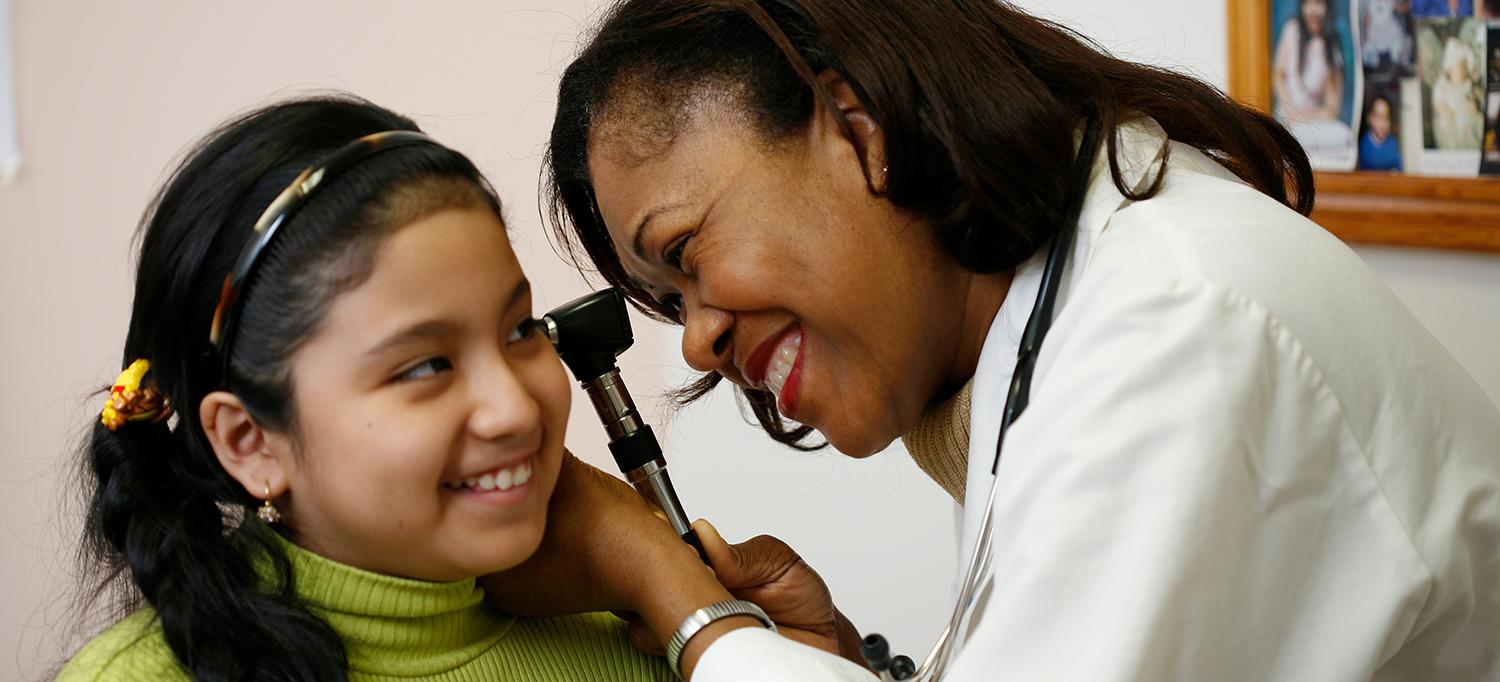School-Based Health Centers Offer Primary Care to 40,000 Public School Students in Brooklyn

Marie-Lourdes Roche, MD, cares for a patient at Sunset Park Family Health Center at NYU Langone.
Photo: Michael Paras Photography
Many schools have a nurse’s office where students can go if they get hurt or sick, but at a select number of Brooklyn schools, children receive far more than bandages, ice packs, and TLC. At Public School 1 in the Sunset Park neighborhood, for example, pediatric nurse practitioner Evelyn Glaser performs annual checkups, gives vaccinations, diagnoses illnesses, prescribes medicine, and even provides referrals to specialists. As a school-based health center operated by the Family Health Centers at NYU Langone, this site functions like a doctor’s office, providing the 1,200 students of P.S. 1 with comprehensive healthcare at no out-of-pocket cost. “Our mission is keeping kids healthy and ready to learn,” Glaser says. “If you miss less school, you’re less likely to fall behind and experience frustration.”
Each year, these school-based health centers treat 40,000 students in 42 public schools located in some of Brooklyn’s most underserved communities, making it one of the largest programs of its kind in New York State. Launched in 1982, the program provides medical, dental, vision, and mental health care to kids and teens with limited access to healthcare. “These are comprehensive programs,” says Larry K. McReynolds, executive director of the Family Health Centers at NYU Langone, which oversees the school-based-health centers. “They provide primary care, in some cases, to a majority of a school’s students who wouldn’t receive healthcare otherwise.”
Now that the Family Health Centers are using Epic, NYU Langone’s electronic medical records system, school-based health center patients are connected to the vast resources of a major academic medical center. “Epic streamlines the transfer of information throughout our network,” explains Isaac Dapkins, MD, chief medical officer of the Family Health Centers at NYU Langone. “So if you get referred to a NYU Langone specialist, this doctor is going to know who you are.”
Studies show that offering primary care to kids at school improves grades and lowers absenteeism and discipline problems. It also reduces emergency department visits and hospitalizations. But children aren’t the only ones who benefit. When kids miss less school, parents miss less work. “We deliver services directly to children, which makes it much easier for parents,” Dapkins says. “It really cuts down barriers to accessing care.”

